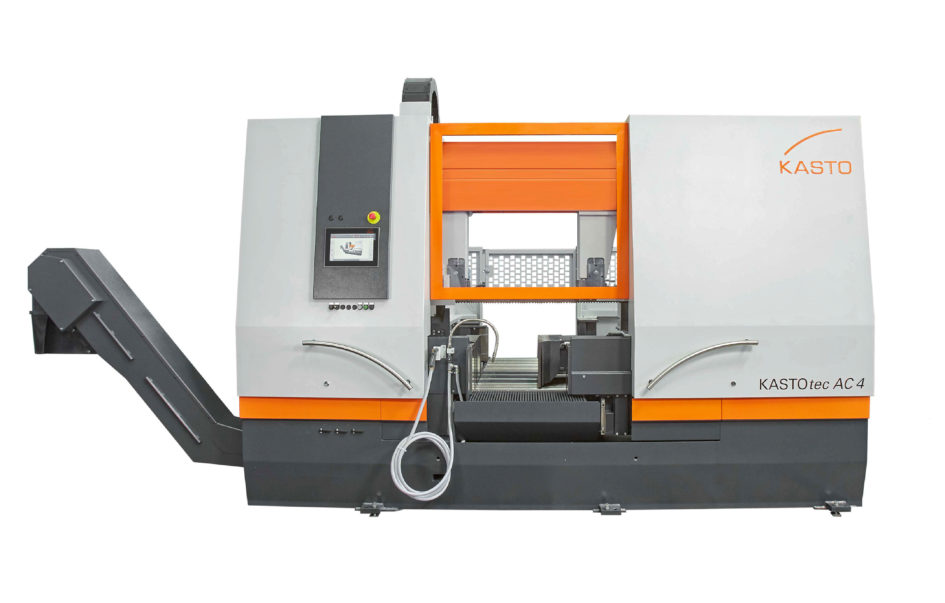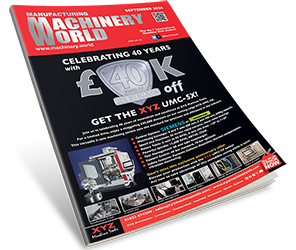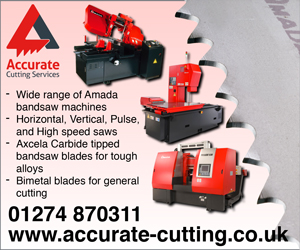Gloucester-based Avent Extrusion Steels (AES – www.aventextrusionsteels.co.uk) stocks and cuts predominantly hot work and cold work tool steel grades used by its customers in a wide variety of industries to manufacture dies for extruding aluminium or copper. It is also a contract machinist of free-issue metals supplied by other customers. To upgrade and increase sawing capacity, in January 2022 the company invested in a new KASTOtec AC4 KPC programmable, horizontal bandsaw, which replaced an ageing machine from a different supplier.
The machine was installed following successful cutting trials in the Milton Keynes showroom of KASTO Ltd (www.kasto.com), the UK and Ireland subsidiary of the German saw manufacturer. It is the first of this make of bandsaw that AES has purchased, there being seven such machines from diverse sources currently in operation on the shop floor in Gloucester.
James Avent, one of half a dozen family members that own and run the business, describes the significant improvements the latest sawing machine has made. He said, “The bandsaw is designed and manufactured specifically for cutting with a tungsten carbide tipped (TCT) blade.
“We opted for a KPC (KASTO Performance Cutting) variant of the machine, with spring-loaded tensioner guides in the top of the frame.
“It prevents band vibration on the side opposite the point of engagement between the blade and the stock, enabling faster, quieter, more accurate cutting and reducing machine wear.
“Coupled with the robust steel and mineral cast construction of the base frame, the saw is four times more productive, like-for-like, than other machines in our factory due to the ability to use faster blade speeds and downfeeds.”
He cited an example involving 10 cuts through round tool steel bar, which constitutes the majority of material processed by the Gloucester firm. The batch was completed in 45 minutes with a TCT blade on the KASTO, whereas the same job previously took three hours on another bandsaw using an identical blade, i.e. four times longer.
In the past, the stockholder sometimes had difficulty using TCT tools due to the material pinching the blade and stripping the teeth. The problem has been almost eliminated by the introduction of blades with teeth that are set to give adequate clearance. Consequently the use of bimetal blades, which currently accounts for 70 percent of throughput even though productivity is two to three times lower than when using TCT blades, will diminish over the coming years as the sawing plant is progressively uprated.
As always, however, the proviso is the attainment of lowest cost per cut, so the three-fold lower cost of a bimetal blade has to be factored into the execution of each job.
The productivity increase using the KASTOtec AC4 KPC, four-fold versus using a TCT blade on other saws in the Gloucester factory and higher still when compared with using a bimetal blade, delivers a further consequential benefit to AES. It is the ability to free up space in the factory due to the machine’s increased output within a compact footprint. Additionally, looking to the future, running fewer bandsaws to achieve a given level of productivity will lead to financial savings in terms of lower power consumption as well as reduced expenditure on blades and servicing.
The bottom line is that the stockholder is now able to deliver tool steel billets to customers more quickly after orders are placed, while prices charged can be held or even lowered through greater production efficiency, making AES more competitive.
Batch size varies considerably, from ones and twos up to 300- or 400-off, average cut length being in the region of 50 to 100 mm, although it can be as short as 6 mm on the KASTO bandsaw or as long as one metre. The number of pieces and their lengths, together with the type of material to be sawn and its diameter, are entered directly via the colour touch-screen of the proprietary KASTO ProControl. Selection of the cutting parameters and instigation of the production cycle are then executed automatically.
Since the KASTO machine’s arrival, further cost savings have resulted from reduced material wastage. Whereas the older saws are set to cut to -0, +2 mm to ensure that material length is not undersize, the blade deviation control on the KASTOtec AC4 is so responsive that it can be set with confidence to half that tolerance. In practice, it allows cutting to within -0, +0.1 mm. Over a large batch, and especially when processing expensive steels, the saving is significant and the customer also benefits by having to machine away less tough material.
Long periods of unattended running are further assisted by a pair of servo motor-driven ballscrews that steplessly adjust the downfeed to optimise blade chip load. A frequency-controlled bandsaw blade drive through a bevel spur gear exploits the advantages of both gear types, delivering 15 kW of power and infinitely adjustable cutting speeds from 30 to 300 m/min. Another feature of the machine that the stockholder appreciates is a function within the KASTO control that allows a new TCT blade to be programmed to run-in automatically at reduced speed to suit the tooth pitch. Maximum cutting diameter on AES’s particular bandsaw model is 430 mm.







